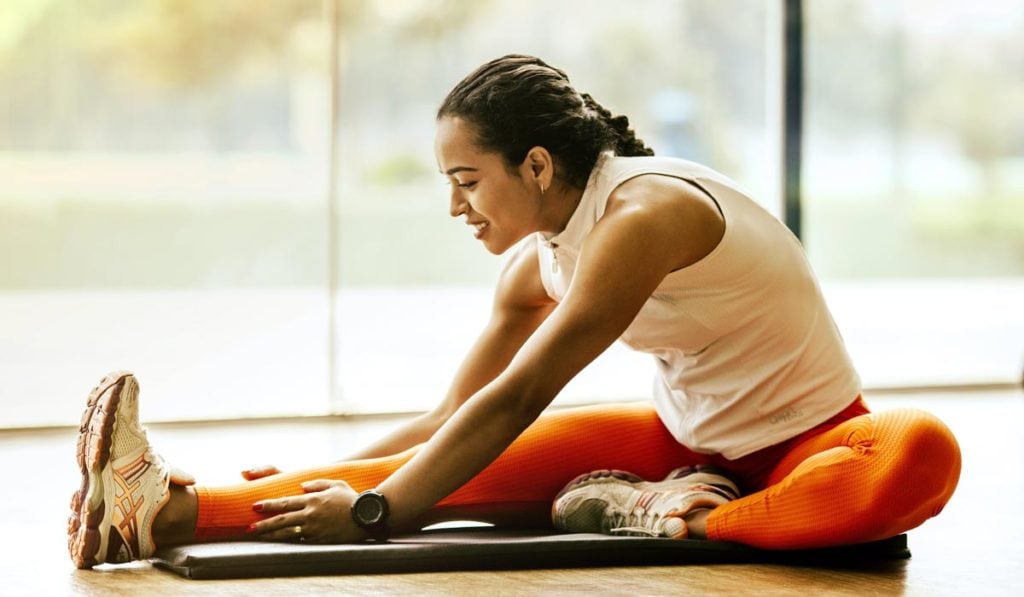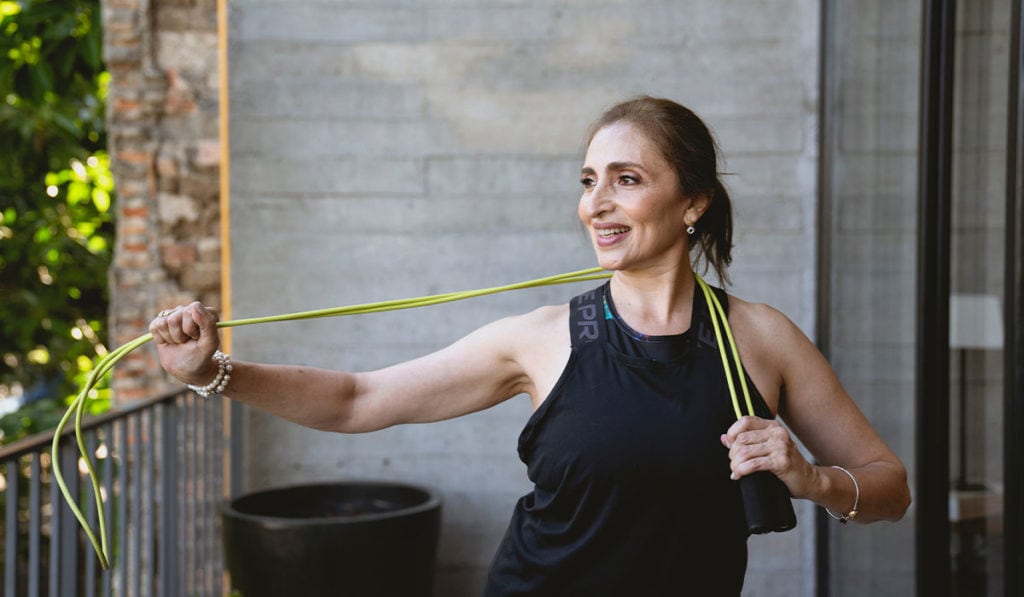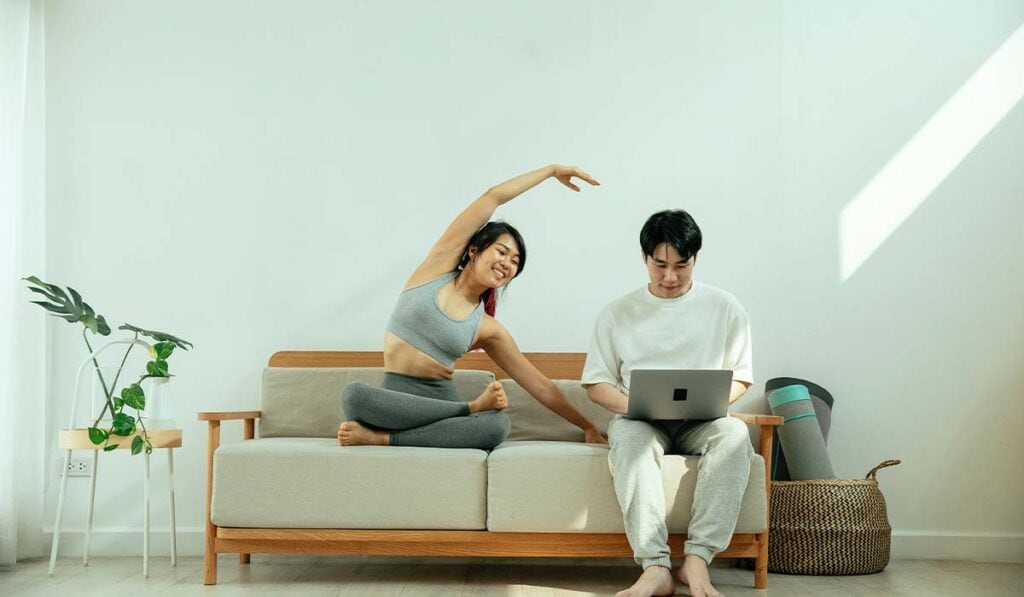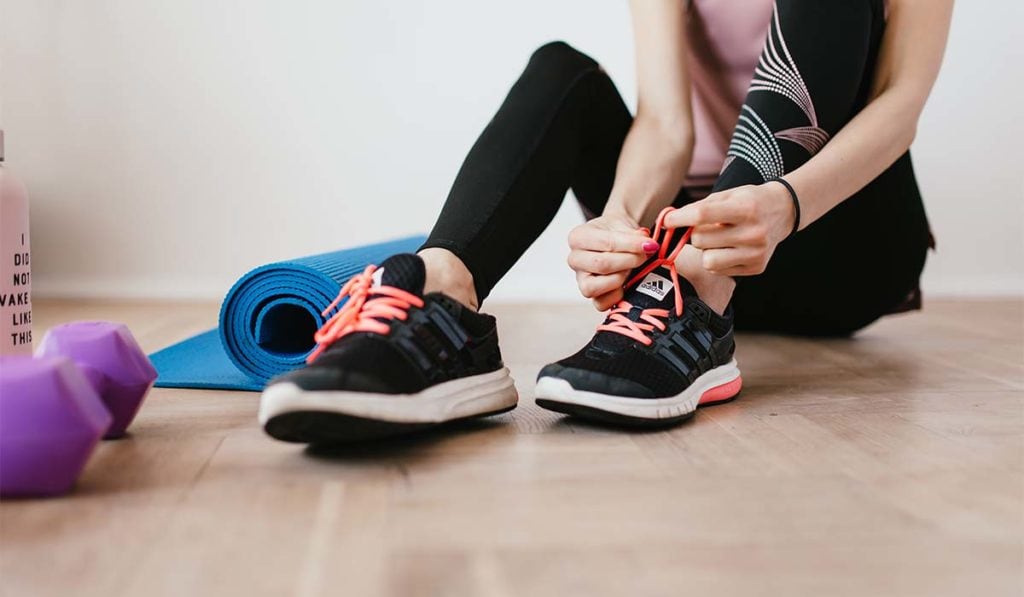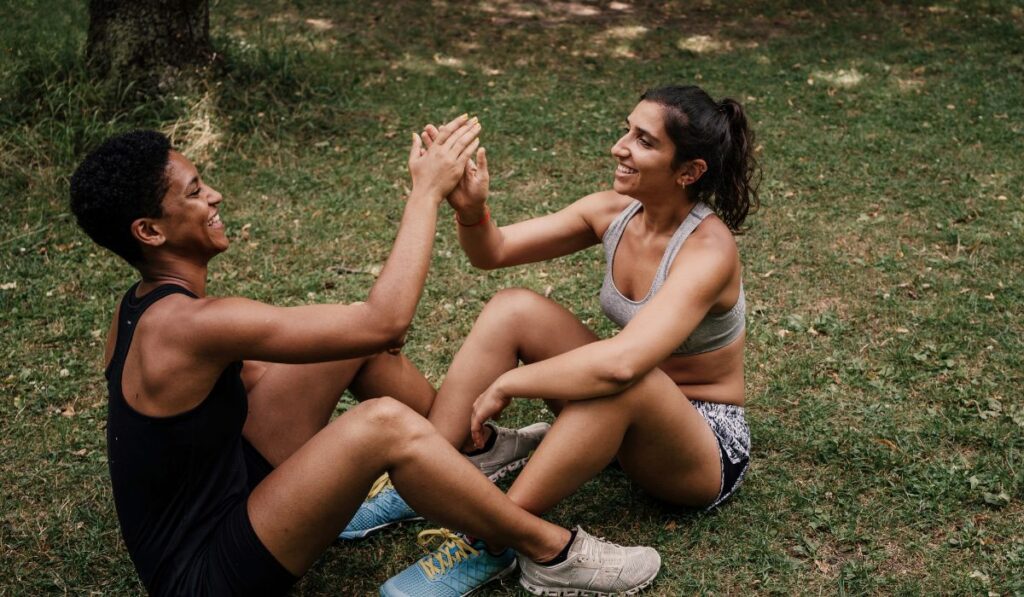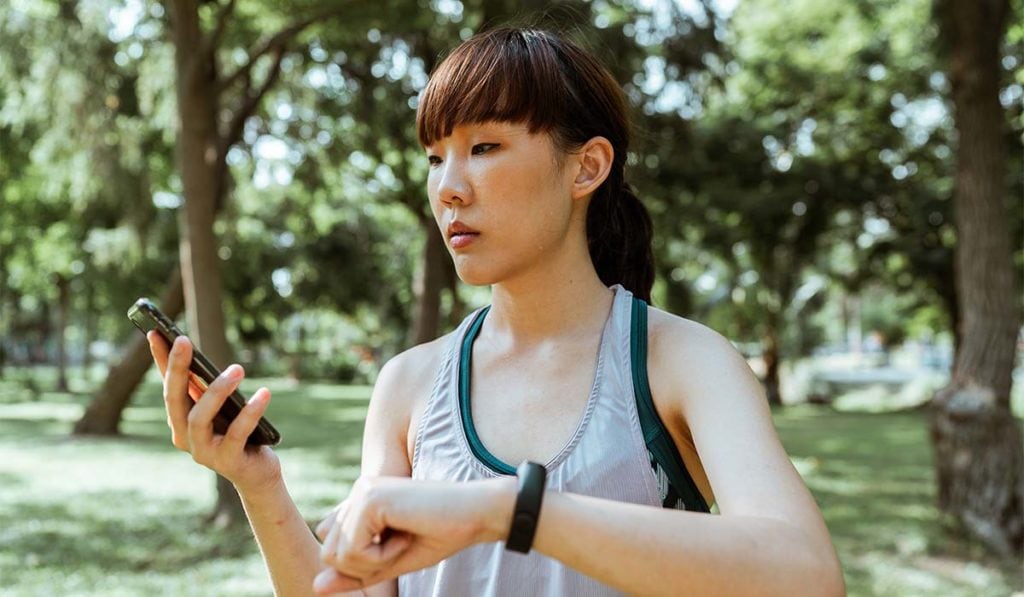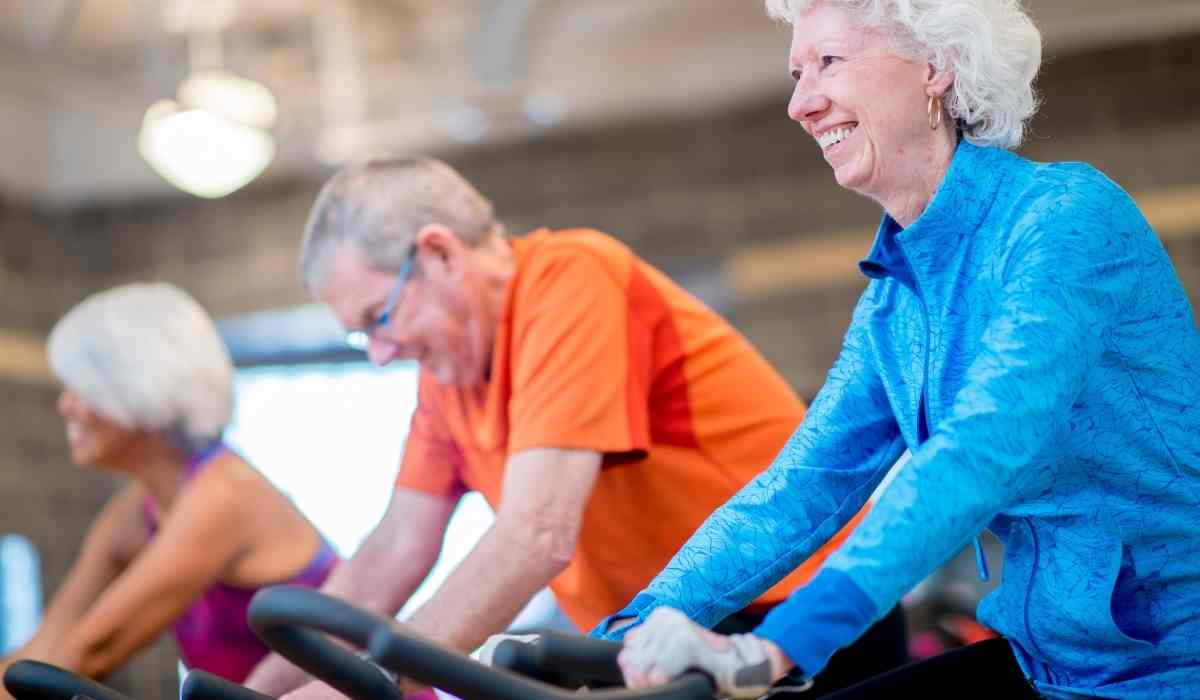
8 Cardio Workout Tips for Seniors
Cardio is an excellent form of exercise for people of all ages, but particularly seniors ages 65 and up. If you’re a senior and you want to get active, consider an aerobic exercise option like cycling or walking. Learn more about its benefits, the best types of aerobic exercise for seniors, and eight cardio workout tips for seniors to help you get started.
What are the benefits of aerobic exercise for seniors?

Physical exercise is beneficial in all stages of life, but according to the Centers for Disease Control and Prevention (CDC), seniors may benefit from cardio, or aerobic exercise, for a few specific reasons.1
- Better mobility: Regular aerobic exercise helps older adults perform daily activities like cleaning, moving around the house, and cooking. As a result, active seniors tend to be better able to live independently.
- Increased muscle strength and bone density: This is especially important for women because they lose bone density faster than men after menopause.
- Decreased risk for chronic illnesses and diseases: Regular physical activity reduces blood pressure, helps control joint swelling and pain due to arthritis, and reduces the risk of conditions like heart disease, colon cancer, and diabetes.
- Fewer falls and injuries: Active seniors are also less likely to fall, fracture, or break bones because exercise helps maintain healthy bones, muscles, and joints.
- Improved mental health: Seniors who exercise regularly may also experience improved mood, reduced symptoms of anxiety and depression, and more positive feelings of well-being.
What is the best type of cardio for seniors?
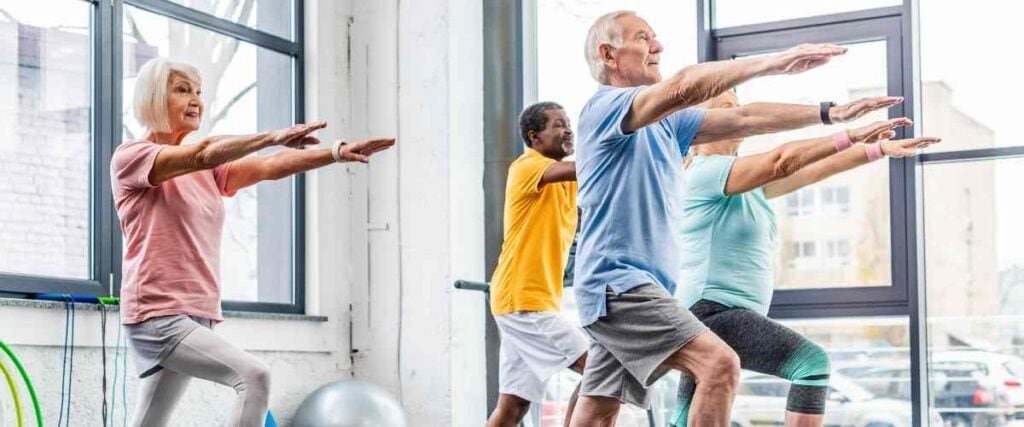
Cardio, or aerobic exercise, is a great way to get your body moving and improve your mental health. Low-impact exercises are often best for older adults, but the best type of cardio for seniors depends on their physical ability and overall health. Some good options include:
- Cycling: Cycling can help improve blood flow and heart and lung health. It’s also easier on the joints and muscles than other cardio activities like running. Although it does require using some larger muscles, including your quads and hamstrings, you can adjust the difficulty of any cycling workout by modifying the mileage, terrain, and time.
- Walking: Seniors of all ages and abilities can walk for better health. You can walk just about anywhere (including indoors on a treadmill with Vingo), and you can easily adjust your routine by modifying the pace or distance of a walk.
- Dancing: Group dance classes are a fun way to engage with others and are also great for your health! Any type of dance will elevate your heart rate, help improve your balance, and strengthen your muscles and joints.
- Swimming: This full-body workout boosts cardiovascular health and endurance, is gentle on the joints, and improves muscle tone and strength. It also increases flexibility and reduces the risk of osteoporosis, which is common among older people, especially women.2
- Household chores: Even just completing activities around the house can provide a great cardio workout. For example, chores like vacuuming, gardening, mowing the lawn, or washing windows are excellent low-impact physical activities for seniors.
How much physical activity do older adults need?
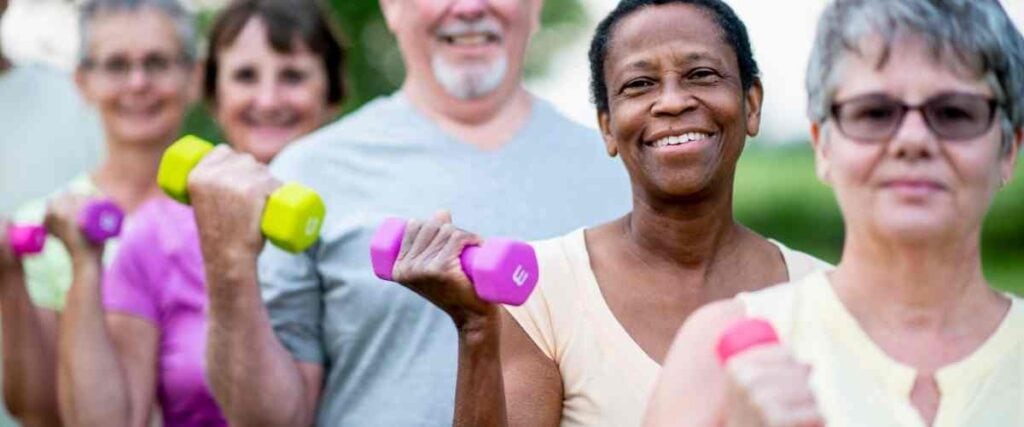
People ages 65 and older need the following amounts of regular physical activity to maintain good health:3
- At least 150 minutes of moderate-intensity activity each week, like brisk walking, or at least 75 minutes of vigorous-intensity activity per week, like jogging or running.
- At least 2 days of muscle-strengthening activities per week.
- Activities that help improve balance about 3 days per week, like the single limb stance.
8 Cardio Workout Tips for Seniors
If you’re an older adult and want to prioritize your health, it’s never too late to start! Daily physical activity is the perfect way to improve your physical health, strength, endurance, and mental health. Follow these cardio workout tips for seniors to ensure you have the best experience possible and stay safe along the way.
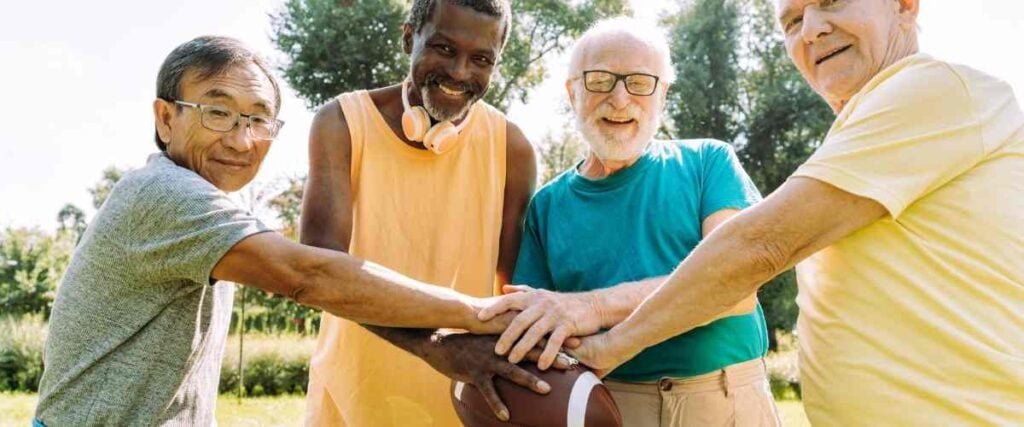
1. Always start with a warmup.
Warming up your muscles before exercise will help protect you from injuries and improve your muscles’ performance by improving blood and oxygen flow. It’s also better for your cardiovascular health to gradually increase your heart rate instead of jumping right into intense exercise.
2. Choose the right type of cardio exercise.
Before starting a new exercise routine, consider what activities you enjoy and will continue to do regularly. For example, if you absolutely hate running but want its physical benefits, consider another type of cardio exercise that provides similar health benefits but will be more enjoyable for you to do daily, like cycling or dancing. You should also consider your health goals and what type of aerobic exercise will most likely get you there.
3. Add variety to your routine.
Even if you’re consistently doing an activity you love, it’s easy to get burned out quickly. To avoid burnout, switch things up by adding a variety of physical activities to your weekly routine. For instance, maybe you take a walk on Monday, Wednesday, and Friday mornings, garden on Tuesdays, and attend a dance class on Fridays. This type of weekly routine is varied enough to stay exciting and interesting while still being beneficial to your health.
4. Tailor the frequency to your lifestyle and abilities.
Consider your current fitness level and the recommended frequency of physical activity for older adults ages 65 and up (listed above) before establishing a new exercise routine for yourself. Know that starting slowly and gradually ramping up the intensity is perfectly fine. You’ll get stronger and build your endurance as you continue exercising regularly. Going slow will help you avoid injuries and burnout.
5. Listen to your body.
If something hurts or doesn’t feel right, stop what you’re doing. Schedule rest into your weekly routine and make sure you give your body adequate time to recover from all the physical activity. Some clear signs you might need to take a day or two off include the following:
- Chronic fatigue
- Lingering soreness or muscle pain
- Frequent injuries
- Reduced appetite or digestive issues
- Repeated bouts of illness
- Mood swings and irritability
- A severe decline in motivation
- Sleep disturbances
- Increased blood pressure or resting heart rate
- Excessive thirst
6. Make it social.
Social activities are vital for senior adults. They help improve emotional, intellectual, and physical wellness and help stave off isolation and loneliness, common issues among seniors.4 Exercise can be a lot of fun when you make it a social event! Whether you take a group class at your local gym, go for group walks in the morning, or join your cycling buddies cycling outdoors or inside with Vingo, you’re much more likely to stick to it when you have friends relying on you to show up regularly.
7. Fuel your body.
Malnutrition is common among older individuals, so hydration and nutrition are critical to your success in any exercise routine. Good nutrition and hydration are essential for health and quality of life because they help seniors remain independent, recover from illnesses or falls more quickly, and avoid hospital admission. It’s also associated with decreased rates of mortality. 5,6 Check out our guides on nutrition for cyclists and runners for specific recommendations.
8. Work with a trainer.
As an older adult, you may benefit from exercising alongside a trainer, physical therapist, or occupational therapist, especially if you have ongoing health issues or you’re recovering from them. A professional with expertise in how the body, organs, and muscles work can help you create a customized plan tailored to your physical abilities and preferences. They can also help you avoid injuries by recommending safe and effective exercise routines.
Key Takeaways:
Cardio is an excellent form of exercise for older adults ages 65 and up. Activities like walking, cycling, or swimming have many physical health benefits, and they can also improve seniors’ overall mental health and social life. Following the tips above can help seniors establish and maintain enjoyable and safe aerobic activities for optimal health.Sources:
- Older Adults | Surgeon General Report | CDC. (1999b, November 17). CDC.gov. https://www.cdc.gov/nccdphp/sgr/olderad.htm
- Osteoporosis. (n.d.). National Institute on Aging. Retrieved October 29, 2022, from https://www.nia.nih.gov/health/osteoporosis
- Physical Activity for Healthy Aging. (2022, June 3). Centers for Disease Control and Prevention. https://www.cdc.gov/physicalactivity/basics/older_adults/index.htm
- Participating in Activities You Enjoy As You Age. (n.d.). National Institute on Aging. Retrieved October 29, 2022, from https://www.nia.nih.gov/health/participating-activities-you-enjoy-you-age
- Nutrition and hydration and ageing. (n.d.). Retrieved October 29, 2022, from https://www.health.vic.gov.au/patient-care/nutrition-and-hydration-and-ageing
- Nutrition and hydration. (n.d.). Retrieved October 29, 2022, from https://www.health.vic.gov.au/patient-care/nutrition-and-hydration



